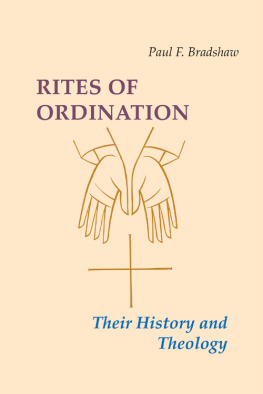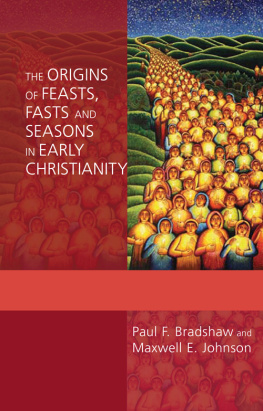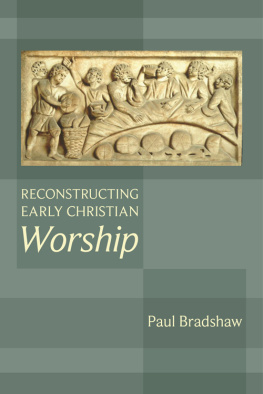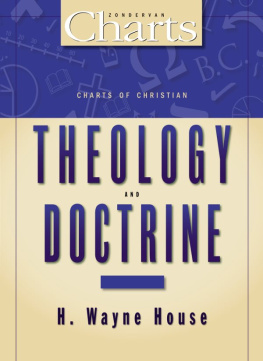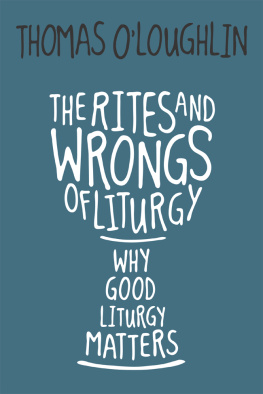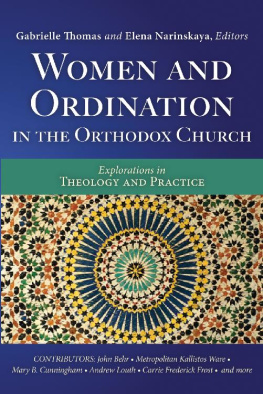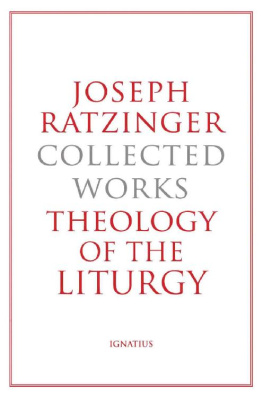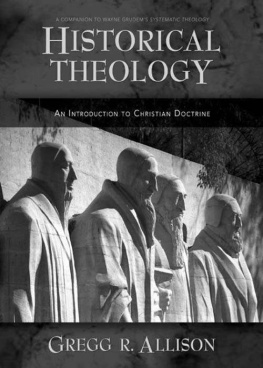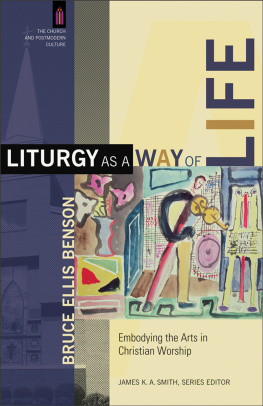We have come to expect from Paul Bradshaw the very best in critical historical studies of Christian liturgical practice and the most accurate and balanced accounts of the diversities of current Christian liturgical meaning. Both gifts are brilliantly present in this book. No future consideration of the history or the meaning of the appointment to leadership in Christian communities will be able responsibly to ignore this important book. Even more, the excellent questions that Bradshaw puts to every period of this historyincluding our ownwill be able to form the basis for a lively conversation between the churches, a conversation that may move toward both mutual recognition of ministries and mutual admonition about their potential misuses. This is a fair, honest, important, and genuinely ecumenical book.
Gordon W. Lathrop
Professor of Liturgy Emeritus
Lutheran Theological Seminary at Philadelphia
Paul F. Bradshaw
Rites of Ordination
Their History and Theology
A PUEBLO BOOK
Liturgical Press Collegeville, Minnesota
www.litpress.org
A Pueblo Book published by Liturgical Press
Cover design by Ann Blattner. Illustration by Frank Kacmarcik, OblSB.
Scripture texts in this book are the authors own translation.
Excerpts from the Book of Occasional Services . Prepared by the Office of Theology and Worship for the Presbyterian Church (U.S.A.), 100 Witherspoon Street, Louisville, KY 40202. Published by Geneva Press, Louisville, KY. 1999. Used by permission.
2013 by Order of Saint Benedict, Collegeville, Minnesota. All rights reserved. No part of this book may be reproduced in any form, by print, microfilm, microfiche, mechanical recording, photocopying, translation, or by any other means, known or yet unknown, for any purpose except brief quotations in reviews, without the previous written permission of Liturgical Press, Saint Johns Abbey, PO Box 7500, Collegeville, Minnesota 56321-7500. Printed in the United States of America.

Library of Congress Cataloging-in-Publication Data
Bradshaw, Paul F.
Rites of ordination : their history and theology / Paul F. Bradshaw.
pages cm
A Pueblo book.
ISBN 978-0-8146-6267-0 ISBN 978-0-8146-6292-2 (ebook)
1. Ordination (Liturgy)History. I. Title.
BV176.3.B73 2013
265'.409dc23
2013029185
Preface
The aim of this book is to provide as full a history of the theology and practice of ordination as is possible within the limits of a reasonably sized volume. Inevitably, however, some aspects cannot be adequately covered. That is true both of the minor orders and also of the ministries belonging exclusively to women (including that of deaconess). These receive some attention for the period of the first few centuries but it has not been possible to trace their later history in detail. Similarly, no attempt has been made to deal with the disputed question of the ordination of women to the ministries traditionally exercised by men, a subject that has been extensively treated in many other publications, among the more recent being Gary Macys The Hidden History of Womens Ordination: Female Clergy in the Medieval West (New York: Oxford University Press, 2008). After we reach the period following the sixteenth-century Reformation, it has also been necessary to cover the ordination practices of the wide range of Christian denominations more superficially and selectively. It has simply not been possible to provide here a detailed comparative study of all the aspects of so many different rites: perhaps someone else will be inspired to take up this piece of research. Furthermore, while it has been necessary to touch on certain other aspects of Christian ministry in order to understand some dimensions of ordination practice, this is not a history of the ordained ministry as such. Nonetheless, in spite of these limitations, it is hoped that this book will serve as a useful introduction to the various ways that different Christian groups through the ages have understood what it means to ordain someone as a minister and how they have expressed that in their practice.
Some twenty-three years ago I published a collection of English translations of the ordination texts of the ancient Christian churches, together with an extensive introduction Ordination Rites of the Ancient Churches of East and West (New York: Pueblo, 1990), hereafter referred to simply as ORACEW . Some of those texts have been reproduced in this book and I have also drawn on parts of the introductory material. But interested readers will still need to turn to that volume itself for other texts for which there was not room and for critical questions associated with the texts that are included here. Finally, I wish to record the special debt of gratitude I owe to the Warden and Fellows of Merton College, Oxford, who elected me as a Visiting Research Fellow for the Trinity term 2011, enabling me to lay the foundations for the book, and to my esteemed colleague Maxwell Johnson, who read the manuscript and offered many useful suggestions.
Paul F. Bradshaw
Abbreviations
AAS | Acta Apostolicae Sedis |
BCE | Before the Common Era |
CE | Common Era |
JEH | Journal of Ecclesiastical History |
JTS | Journal of Theological Studies |
NPNF | Nicene and Post-Nicene Fathers |
ORACEW | Paul F. Bradshaw, Ordination Rites of the Ancient Churches of East and West (New York: Pueblo, 1990) |
PG | J. P. Migne, Patrologia Graeca |
PL | J. P. Migne, Patrologia Latina |
Puglisi | James F. Puglisi, The Process of Admission to Ordained Ministry: A Comparative Study , 3 vols. (Collegeville, MN: Liturgical Press, 19962001) |
SL | Studia Liturgica |
SP | Studia Patristica |
ST | Studi e testi |
Translations of primary sources not otherwise attributed are the work of the author.
Chapter 1
Historical and Typological Background
Christian ministers are not the direct historical successors of any of the ministries mentioned in the Old Testament, but because successive generations of Christians have drawn upon those texts and used them as images or types for their various ministries, in order to help define their essential character, it is important that we consider them before passing on to ministry in the New Testament.
THE OLD TESTAMENT PRIESTHOOD
As we shall see in chapter 3, from the third century onward the ordained ministry was increasingly viewed as a priesthood, and the threefold pattern of bishop, presbyter, and deacon that had emerged in the course of the second century was understood as forming the counterpart of the threefold ministry of high priest, priest, and Levite found in the Old Testament. According to the Pentateuch, Aaron was appointed as the first high priest and his sons as priests (see, e.g., Exod 28ff.), with certain other members of the tribe of Levi as their ministers (Num 8:5-26), thus forming a threefold hierarchy that continued throughout the centuries. Historical-critical scholarship, however, suggests that the true story of the Israelite priesthood was not as simple as that.
The oldest layers of the Pentateuch know of no professional priests. Instead, in the patriarchal narratives it is the family or tribal leader who officiates at sacrificial acts on behalf of his people. Examples include Noah (Gen 8:20), Jacob (Gen 31:54), and, above all, Abraham in his willingness to sacrifice his son Isaac (Gen 22:1-19). Similarly, although the later contributors to the Pentateuch material never portray Moses as a priest (because they regarded the Israelite priesthood as stemming from his brother Aaron), Moses nonetheless consecrates Aaron and his sons as priests and offers sacrifice on that occasion (Exod 2829), in line with the ancient tradition by which tribal leaders exercised that role. Remnants of this remain in the presiding position of the head of the household at the domestic celebration of the Passover meal.
Next page
